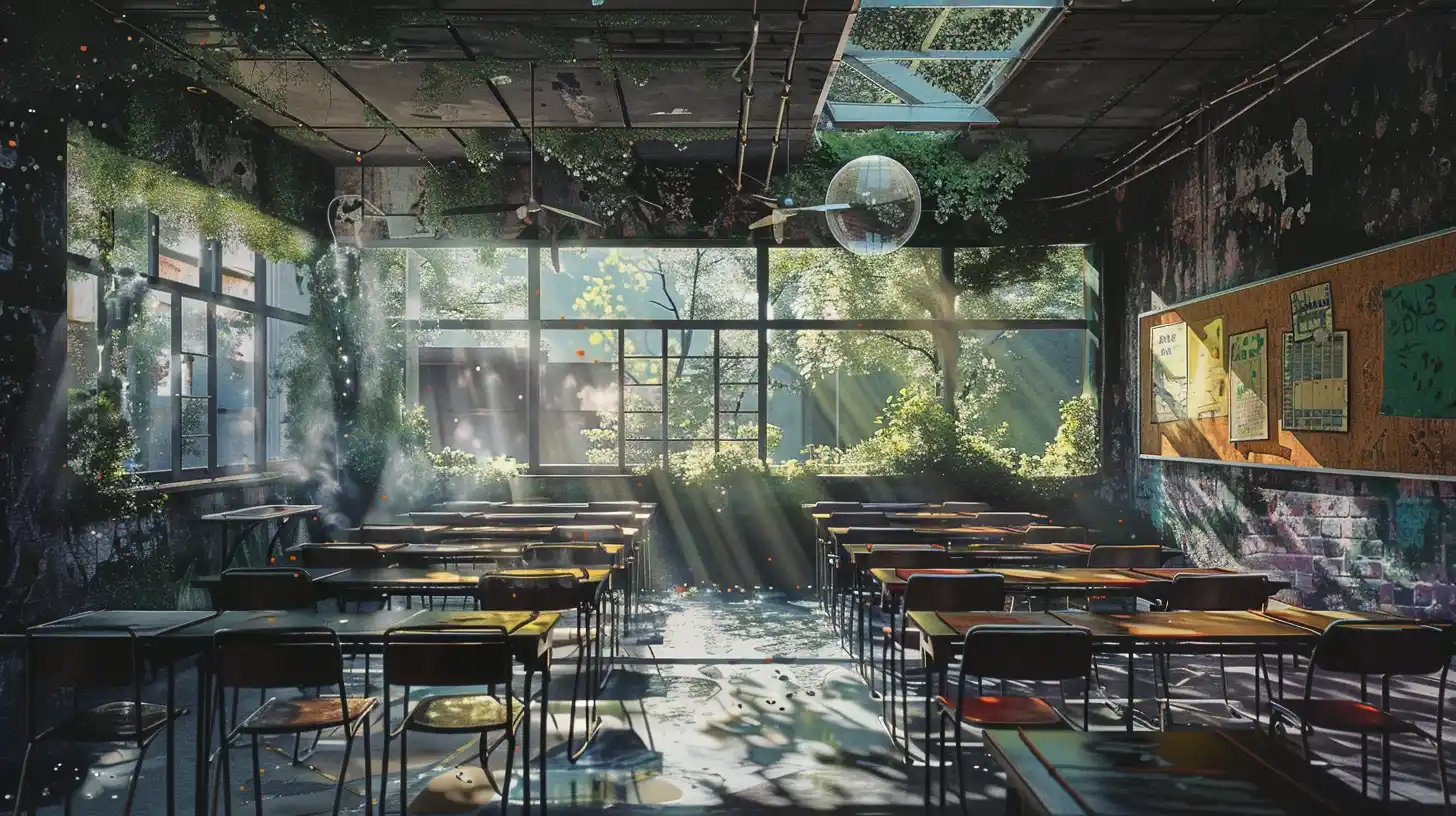
Designing Resilient Schools Creating Safe Learning Environments

When it comes to crafting schools, it’s not just about bricks and mortar. It’s about building spaces that can weather storms, both literally and figuratively. Designing resilient schools means creating environments that are not only physically secure but also foster growth and inspiration among students and staff. Today, we’ll look at the essential elements of resilient school design and why it matters for creating safe and inspiring learning environments.

Latest
Other Topics
Why Designing Resilient Schools is Important
Establishing a safe and secure learning environment is paramount. This involves setting clear rules, fostering empathy among students, and recognizing their efforts in various ways. By prioritizing safety and trust, schools can create spaces where students feel protected and valued, enabling them to ask questions, take risks, and express themselves freely.
But safety goes beyond physical security; it extends to psychological and emotional well-being as well. A positive learning environment is one where students feel supported, engaged, and motivated to learn. This can be achieved through effective communication, promoting class discussion, and providing opportunities for students to work on projects they’re passionate about. By creating a sense of order and routine, schools can help students feel more comfortable and confident in their learning journey.
Factors To Consider
In designing resilient schools, there are crucial factors to consider beyond the physical structure. Resilience entails flexibility, adaptability, and a proactive approach to addressing potential challenges. By embracing these principles, schools can create environments that not only withstand external pressures but also foster creativity, curiosity, and academic excellence among students.
Integration of Universal Design Principles
One key aspect of resilient school design is the integration of universal design principles. By prioritizing accessibility and inclusivity, schools can ensure that all students, regardless of their abilities or backgrounds, have equal access to education. This might involve implementing features such as ramps, elevators, and sensory-friendly spaces to accommodate diverse learning needs.
Sustainability
Sustainability is another critical consideration in resilient school design. By incorporating green building practices, renewable energy sources, and environmentally friendly materials, schools can reduce their ecological footprint and instill a sense of environmental stewardship among students. Additionally, sustainable design features can contribute to long-term cost savings and operational efficiency for educational institutions.
Innovative Technology
Innovative technologies also play a significant role in resilient school design. From advanced security systems to interactive learning tools, technology can enhance safety, facilitate collaboration, and enrich the learning experience for students. By staying abreast of the latest advancements in educational technology, schools can create dynamic and engaging learning environments that prepare students for success in the digital age.
Community Engagement
Community engagement is essential throughout the design process. By soliciting input from students, parents, educators, and other stakeholders, schools can ensure that their design reflects the unique needs and priorities of the community it serves. This collaborative approach fosters a sense of ownership and pride in the school environment, strengthening its resilience and fostering a supportive educational ecosystem.
Strategies and Best Practices When Designing Resilient Schools
Let’s look at specific strategies and best practices that can enhance safety, inclusivity, sustainability, and innovation within educational environments.
Safety
Safety involves not only implementing robust security measures but also designing spaces that promote physical and psychological well-being. Features such as secure entry systems, emergency evacuation plans, and trauma-informed design can help mitigate risks and ensure a sense of security for students and staff alike.
Inclusivity
Inclusivity is another crucial aspect of resilient school design. By embracing diversity and catering to the needs of all learners, schools can create environments where every student feels valued and supported. This might involve incorporating flexible learning spaces, providing resources for students with disabilities, and fostering a culture of respect and acceptance within the school community.
Sustainability
Sustainability is inherently linked to resilience in school design. By adopting green building practices and prioritizing energy efficiency, schools can minimize their environmental impact and reduce long-term operating costs. Features such as solar panels, rainwater harvesting systems, and eco-friendly materials can help schools achieve sustainability goals while creating healthier indoor environments for students and staff.
Innovation
Innovation is key to future-proofing schools and preparing students for the challenges of tomorrow. By embracing emerging technologies and innovative teaching methods, schools can create dynamic learning environments that inspire creativity, critical thinking, and collaboration. From maker spaces and virtual reality labs to project-based learning initiatives, the possibilities for innovation in school design are endless.
Conclusion
It’s essential to recognize the interconnectedness of safety, inclusivity, sustainability, and innovation. By integrating these elements into the fabric of school environments, we can create spaces that not only withstand the test of time but also empower students to thrive and succeed in an ever-changing world.
Remember that Designs Boss is here to bring your vision to life. Our team of dedicated architects and designers is ready to collaborate with you every step of the way, from conceptualization to execution.
Contact us today to see how we can help you create safe, inclusive, sustainable, and innovative learning environments that truly make a difference. Together, let’s build the schools of tomorrow where every student can thrive and succeed.


